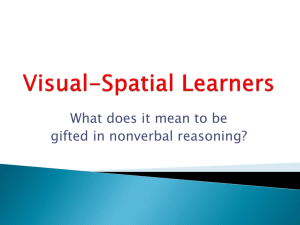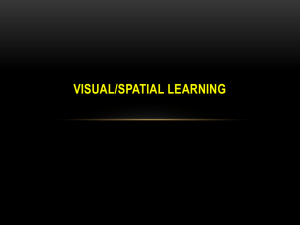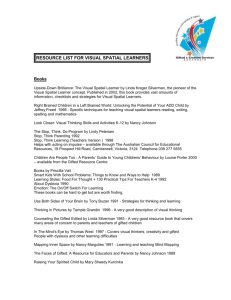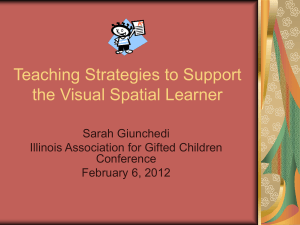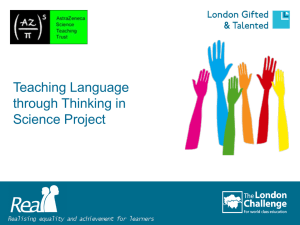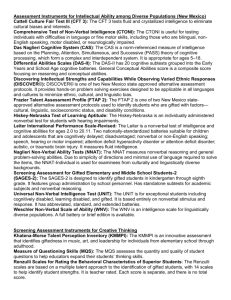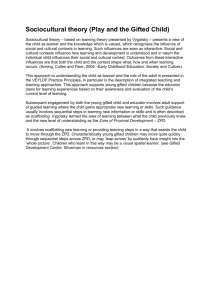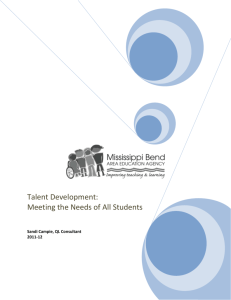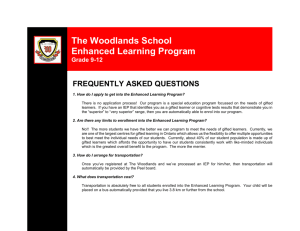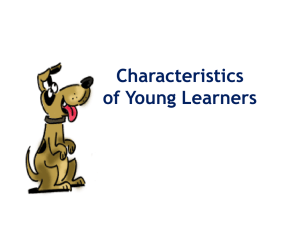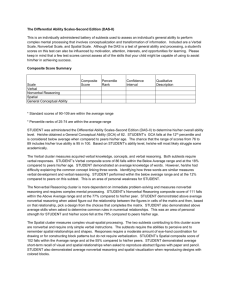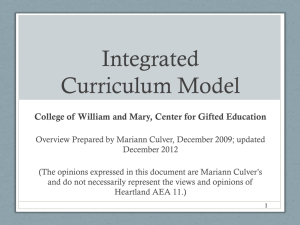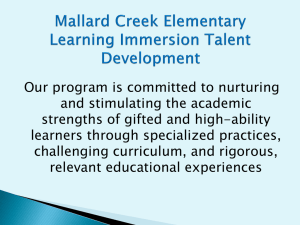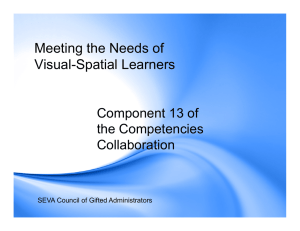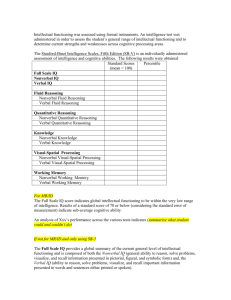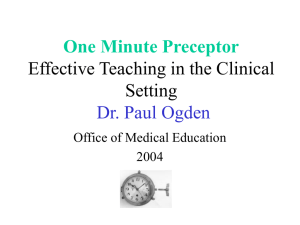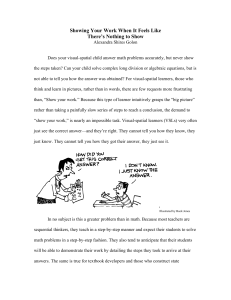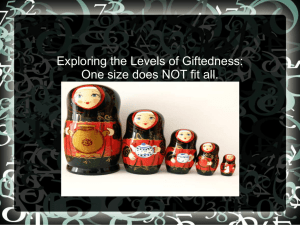Visual Spatial Learners - Gilbert Public Schools
advertisement
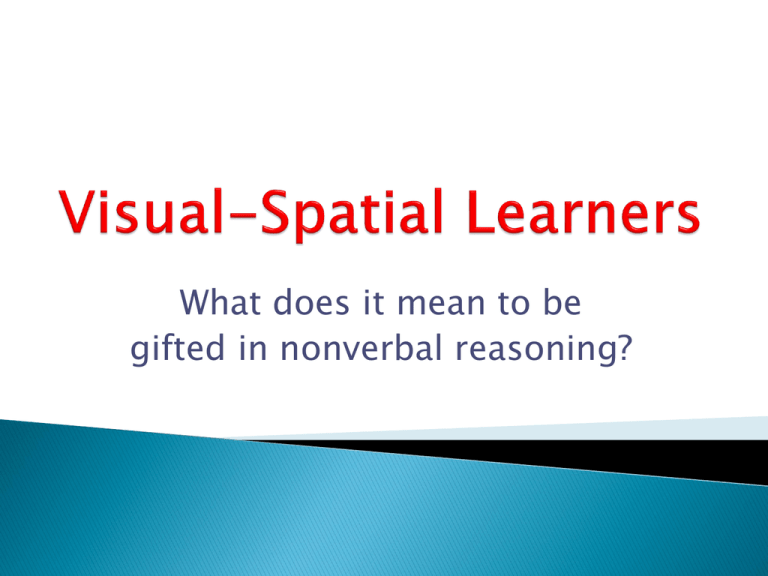
What does it mean to be gifted in nonverbal reasoning? Ability in spatial and abstract thinking Ability to solve problems using shapes and figures Items on these subtests of the Cognitive Abilities Test involve neither words nor numbers. There are two main ways people learn ◦ Visual-spatial learners think in pictures rather than words. They have a different brain organization than auditory-sequential learners. They learn better visually than auditorally. ◦ Auditory-sequential learners think in words. They learn better by hearing information and following a logical sequence. Thinks primarily in words Thinks primarily in pictures Has auditory strengths Has visual strengths Step-by-step learner Whole-to-part learner Usually has good Creates unique methods of organization Can show steps of work organization easily Progresses from easy to Arrives at correct solutions intuitively difficult material Gets difficult concepts, often struggles with easy Relates well to time Relates well to space Learns by trial and error Learns concepts all at once Does well with algebra ‣ Does well with geometry Good at math computation ‣ Good at math reasoning Analysis ‣ Synthesis Phonics ‣ Sight words Can write quickly and neatly ‣ Prefers keyboarding to writing Sees how things exist in space Sees how parts go together to make a whole Develops asynchronously (unevenly) Is a late bloomer Loses track of time May struggle with public speaking When the light bulb goes on, the learning is usually permanent. How do we know this? ◦ Your student scored at or above the 97th percentile on the subtest of the Cognitive Abilities Test (or other state-approved assessment) that measures nonverbal reasoning. What does this mean? ◦ Your student is very good at reasoning with spatial stimuli or particularly adept at solving novel problems. ◦ They also tend to notice things in their environment that other people miss. Spatially gifted students have the ability to draw conclusions based on a set of given information. They often learn by thinking or “seeing through their mind’s eye” instead of listening verbally. They may even seem to not be paying attention to you. Often these children are more sensitive and intense. Puzzles, manipulative games, pattern, and building/creating things come easily for kids who are gifted in this area. They can “see” how things go together and are able to “see” what is missing. Their thinking is often in the form of patterns or pictures. Traditionally, instruction in schools has tended to be geared to the auditorysequential style of learning. Students with strong spatial skills often experience difficulties in school. They may have difficulty in verbal fluency (as when writing under time pressure or speaking extemporaneously) or difficulties in remembering sequences of words or letters (as in spelling). Teachers are now much more aware of brain-based research. We know that the left side of the brain is responsible for language, for breaking words and thoughts apart, and for details. The right side of the brain is responsible for feeling and rhythm, for blending words and thoughts, and for getting the big picture. What are some of these? ◦ ◦ ◦ ◦ ◦ ◦ ◦ ◦ ◦ ◦ ◦ ◦ ◦ Visual directions Models, charts, tables, graphs, pictures Hands-on learning experiences Visualization techniques Whole-to-part approach Use of color Organization strategies Computers and other technology Use of context clues Timing strategies Wait time Questioning techniques Disciplining strategies Spatial reasoning is not a subject area—like language arts, math, or science. It is a learning modality, a way that people learn. Team should consider developing a DLP (Differentiated Learning Plan) for Nonverbal Gifted. puzzles Pentominoes Tangrams Pythagoras 3-D Tic-tac-toe 3-D Scrabble D-Stix Mira Pattern Blocks Soma Blocks Tessellations Perceptual Puzzle Blocks Triominos Attribute Dominoes Attribute Logic Crazy Quilt Drive Ya Nuts Globe Maps Take 5 Square Up Logic Links Noodlers Connect 4 Hexed Rack-O Master Mind Simon Battleship Set Chess Checkers any skill card game Bridge Canasta Hearts many Discovery Toys any construction material Erector sets K’Nex Capsela Legos Books ◦ Upside-Down Brilliance: The Visual-Spatial Learner by Linda Kreger Silverman, Ph.D. ◦ Visual-Spatial Learners by Alexandra Shires Golon Websites ◦ www.visualspatial.org ◦ www.visual-learners.com ◦ www.gifteddevelopment.com
